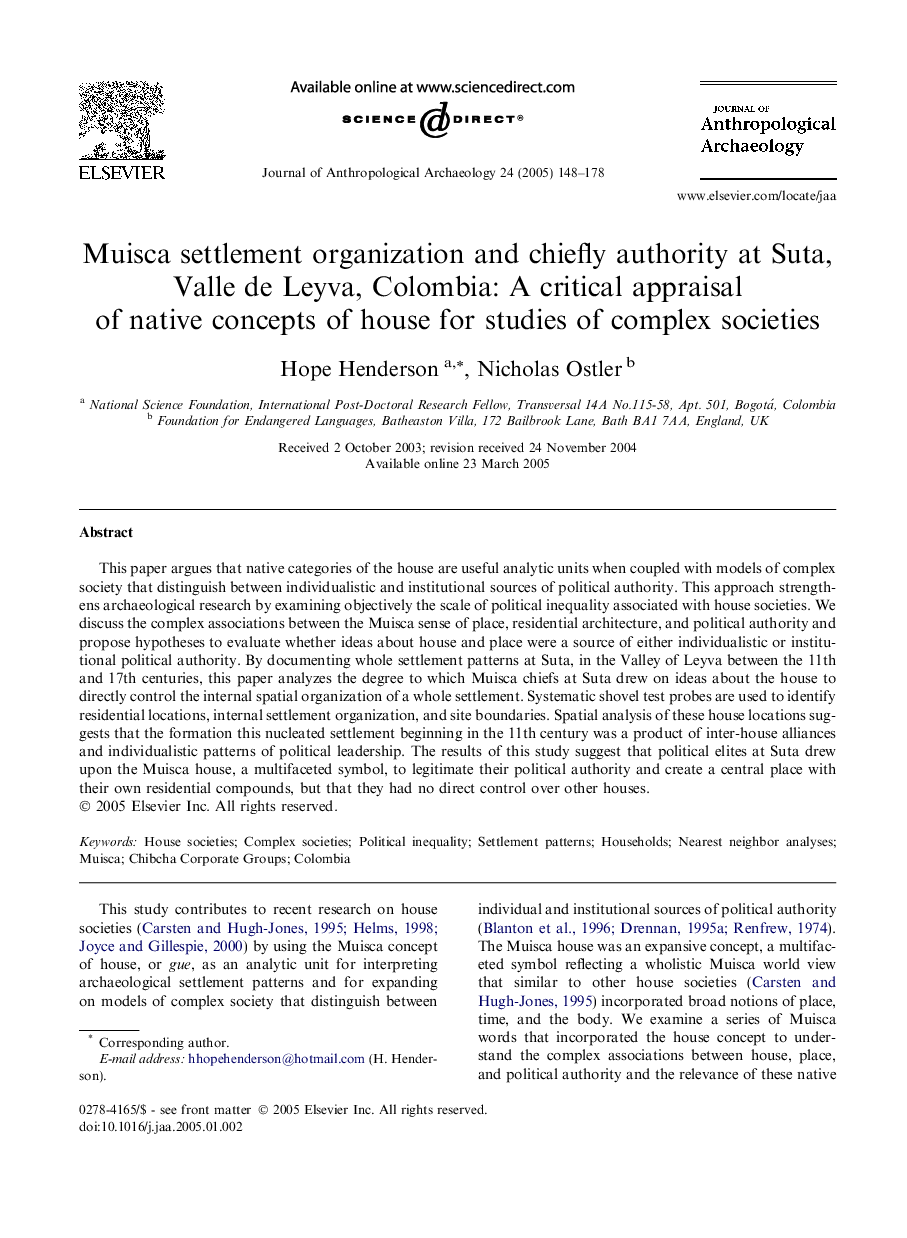| کد مقاله | کد نشریه | سال انتشار | مقاله انگلیسی | نسخه تمام متن |
|---|---|---|---|---|
| 10498762 | 943708 | 2005 | 31 صفحه PDF | دانلود رایگان |
عنوان انگلیسی مقاله ISI
Muisca settlement organization and chiefly authority at Suta, Valle de Leyva, Colombia: A critical appraisal of native concepts of house for studies of complex societies
دانلود مقاله + سفارش ترجمه
دانلود مقاله ISI انگلیسی
رایگان برای ایرانیان
کلمات کلیدی
موضوعات مرتبط
علوم انسانی و اجتماعی
علوم انسانی و هنر
تاریخ
پیش نمایش صفحه اول مقاله

چکیده انگلیسی
This paper argues that native categories of the house are useful analytic units when coupled with models of complex society that distinguish between individualistic and institutional sources of political authority. This approach strengthens archaeological research by examining objectively the scale of political inequality associated with house societies. We discuss the complex associations between the Muisca sense of place, residential architecture, and political authority and propose hypotheses to evaluate whether ideas about house and place were a source of either individualistic or institutional political authority. By documenting whole settlement patterns at Suta, in the Valley of Leyva between the 11th and 17th centuries, this paper analyzes the degree to which Muisca chiefs at Suta drew on ideas about the house to directly control the internal spatial organization of a whole settlement. Systematic shovel test probes are used to identify residential locations, internal settlement organization, and site boundaries. Spatial analysis of these house locations suggests that the formation this nucleated settlement beginning in the 11th century was a product of inter-house alliances and individualistic patterns of political leadership. The results of this study suggest that political elites at Suta drew upon the Muisca house, a multifaceted symbol, to legitimate their political authority and create a central place with their own residential compounds, but that they had no direct control over other houses.
ناشر
Database: Elsevier - ScienceDirect (ساینس دایرکت)
Journal: Journal of Anthropological Archaeology - Volume 24, Issue 2, June 2005, Pages 148-178
Journal: Journal of Anthropological Archaeology - Volume 24, Issue 2, June 2005, Pages 148-178
نویسندگان
Hope Henderson, Nicholas Ostler,